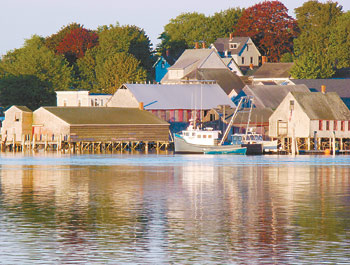LAPPs & Quotas Draw Fire
by Laurie Schreiber
|
The New England Fishery Management Council recently reviewed procedures and voting eligibility requirements on individual fishing quotas (IFQ) programs, as part of the National Marine Fisheries Service final rule for limited access privilege programs (LAPP).
Dan Morris of NMFS’ Northeast Regional Office outlined guidelines for an IFQ referendum as they will apply to New England fisheries.
According to Morris, the issues include determining the criteria to be used in relation to particular fisheries, and to participants in the LAPP, and the rationales and supporting documentation to be required to eligibility. Eligibility for permit holders could pertain to fishing participants, current and past harvest and level of participation in the fishery, and other factors. Crew eligibility might be based on the definition of “crew,” work history aboard eligible vessels, and portion of income derived from the fishery.
Once an IFQ proposal is drawn up, the approval process involves putting the proposal out to public hearing, and then sending it on to NMFS for their consideration, with NMFS publishing a final rule and issuing ballots to those voters who are eligible to vote the IFQ up or down.
continue
|

On the Narrows, McCurdy's Smokehouse in Lubec, Maine. As management moves Limited Access Priviledge Programs and quota systems ahead, members of congress are lining up with fishermen to address the severe negative impact of these on New England fishing communities, both small and large. Photo by Chessie Johnson |
|
Need a Bigger Boat?
by Mike Crowe
|
Maine’s history dates back thousands of years, beginning with the so-called, “Red Paint People,” indigenous humans who buried their dead with varying amounts of red ocher, or powdered hematite. Norsemen sailed the New England coastline beginning around 1,000 and some evidence suggests that they visited Maine. Then, in 1497, John, Lewis, Sebastian and Sancius Cabot, sailed along Maine’s coast, on a directive from English King Henry VII. From that point on, the wave of Europeans continued and today, our state holds at least vestigial traces of the countless people and groups who either visited Maine or planted roots here and became part of Maine society and eventually, Maine history.
continue
|
| Launching day: The Wyoming. Percy and Small Shipyard, Bath, Maine. 12/14/1909. 329’x50’x30’. The last six-masted schooner built and the largest wooden sailing vessel ever built. 3,730 gross registered tons. 450’ tip of jibboom to tip of spanker boom. Keel laid 4/5/1909. Ground tackle 240 fathoms of anchor chain and two cast steel anchors weighing 60 tons. Capacity: 6,000 tons of coal. Otis M.E. Card/F.J. Rollins. Photo: courtesy of Richard Card |
|
|

